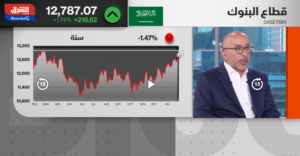In the early 1980s, the development boom in Manhattan ushered in a new concept for the city. Known as pre-selling, it led to increasingly imaginative ways as developers resorted to tactics ranging from locked-in monthly payments to guaranteed rentals and even discounts in the form of a waiver of community association fees (sound familiar?). Such was the popularity of pre-selling that in 1984, more than half of Manhattan’s real estate sales recorded were through this.
Fast forward three decades and the landscape in Manhattan has completely changed, with less than 7 per cent of registered sales being pre-sold. In New York, developers build and then sell. At the same time, in Miami (where it originated in the 1960s), the trend remains predominantly in favor of pre-selling, with more than 40 per cent of transactions taking place this way.
What accounts for the difference in the two approaches? While there are myriad reasons, what we witness qualitatively in the two markets is that where there remains an emphasis on pre-selling, two factors predominate: (1) the communities have a higher propensity of tenants and/or holiday homeowners, and (2) given the emphasis on offplan finance, there are greater delays in build out periods.
This was witnessed in Manhattan throughout the 1980s and early 1990s, and is still seen in Miami. In Manhattan, partially as a result of soaring land values and partially because of sophisticated financial structures, the reliance on offplan financing has receded. As such, project timelines have become more strictly adhered to, especially as financial structures became more debt-and covenant-based, and the percentage of stalled” projects dropped to virtually zero.
Dubai’s freehold market has for the most part emulated the Miami model of development. Barring a few blue-ribbon gated communities such as Emirates Hills and the Palm, the overwhelming trend has been for developers to rely on offplan financing. Accordingly, over time, delivery schedules have fallen and risen with prices.
Wherever and whenever prices have become sluggish, delivery timelines have been pushed back. It is for this reliance on offplan financing, more than any other variable, that accounts for supply estimates to have been systematically exaggerated by market pundits.
Renovations
Other interesting nuggets stand out in the data as well. In tenant-dominated communities, investors are more peripatetic and the propensity of maintenance is lower, which itself is a function of price and yield. This implies that over time, the price variation becomes asymmetric on the downside.
We are starting to witness this in some of the buildings completed in the 2003-05 period, triggering renovations in some areas. Where remedial action has not been taken, this has led to greater downward rental and price sensitivity. Paradoxically, the conventional conclusion that higher income communities have higher levels of upkeep has not been followed.
We have seen a greater price variation on the upside in mid-income communities such as Sports City, Majan and Dubai Residential Complex. Equally, there has been greater variation on the downside at high-end communities such as Business Bay and Dubai Marina. This indicates the build quality – which gets compromised when sales gimmicks rise – and the subsequent upkeep of the unit and area come to the fore.
Developers who acquire credibility in the market – regardless of their size – will attract a more stable end-user base. This necessarily implies a more stable financial structure for their next project and greater visibility of supply not tethered to sales tactics.
We are beginning to see a change in this model. A few boutique developers have reduced their emphasis on offplan financing and replaced it with more stable structures, both equity and debt. While these developers represent a mere handful, what we have seen are higher prices in those buildings – both offices and residential – when compared to the community.
Furthermore, we witness a lower turnover in these buildings, indicating a higher propensity of end-users. Statistically, this manifests itself in the form of higher variation in prices.
It indicates that pricing at the unit level becomes individualized as each unit owner upgrades or maintains at a higher specification than in buildings dominated by tenants. While the emphasis on offplan financing is unlikely to diminish significantly over a five-year timeframe, the rise of such developers indicates a direct contact with end-users.
Over time, this promises greater visibility and product quality at both ends of the market.
— The writer is Managing Director of Global Capital Partners.





